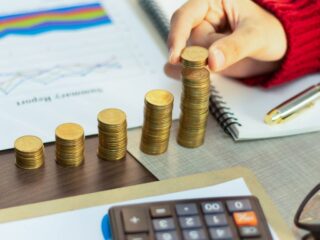The creation of computerized trading systems has revolutionized the panorama of digital asset markets, bringing extensive adjustments to how trading is performed. These structures leverage superior algorithms and excessive-velocity data processing to execute trades with precision and velocity, frequently surpassing the competencies of human investors. As the digital asset marketplace continues to expand, the adoption of automated trading structures is becoming increasingly common. Automated trading systems can be quite handy for beginners, but keep learning about investing. Go https://bitcoin-storm.app now and start learning by connecting with educational firms.
Understanding Automated Trading Systems
Automated buying and selling structures, additionally referred to as algorithmic trading or bots, are software applications that follow a fixed set of predefined guidelines or algorithms for region trades. These systems can examine marketplace facts, perceive buying and selling possibilities, and execute orders without human intervention.
Development of Automated Trading Systems
The development of computerized buying and selling structures in virtual asset markets can be attributed to several factors:
Technological Advancements:
Innovations in synthetic intelligence (AI), machine learning, and large statistics analytics have enabled the introduction of sophisticated trading algorithms that can technique great amounts of records in real-time.
Market Maturity:
As virtual asset markets mature, there is a growing demand for tools that could enhance trading performance and reduce human blunders.
High Volatility:
The inherent volatility of virtual property like cryptocurrencies creates opportunities for automatic structures to capitalize on brief-term rate moves.
Benefits of Automated Trading Systems
The integration of automated trading systems into virtual asset markets gives several blessings:
Speed and efficiency
Automated buying and selling structures can execute trades at speeds that are not possible for human investors to match. This speed is critical within the fairly volatile digital asset marketplace, in which prices can trade unexpectedly. Automated structures can input and exit positions within milliseconds, making sure that investors can capitalize on fleeting possibilities.
Accuracy and consistency
Human buyers are vulnerable to errors and emotional choice-making, which could result in inconsistent buying and selling results. Automated trading structures function based on predefined algorithms, putting off the hazard of human errors and making sure the constant execution of trades is in step with the set parameters.
24/7 Market Monitoring
Digital asset markets function across the clock, unlike traditional economic markets that have set buying and selling hours.

Automated trading systems can continuously monitor the marketplace and execute trades at any time, making sure that possibilities aren’t ignored, even when buyers aren’t actively tracking the market.
Data-Driven Decisions
Automated buying and selling systems can analyze large datasets and identify styles that are probably invisible to human buyers. This information-pushed technique permits more informed buying and selling choices, probably leading to better consequences.
Diversification
Automated structures can manipulate a couple of buying and selling techniques simultaneously, allowing buyers to diversify their portfolios more efficiently. This diversification can help mitigate risks and increase returns.
Challenges and Risks
Despite the numerous benefits, using automatic trading structures in virtual asset markets also offers numerous demanding situations and risks.
Technical Failures
Automated buying and selling structures rely on technology, and any technical failure can result in massive losses. Issues consisting of software bugs, connectivity issues, or hardware failures can disrupt buying and selling activities.
Market Impact
High-frequency buying and selling using computerized systems can cause accelerated marketplace volatility. The speedy execution of large volumes of trades can cause considerable charge fluctuations, impacting market stability.
Over-Optimization
Traders may additionally fall into the lure of over-optimizing their algorithms based on historical information, a practice called “curve becoming.” While those algorithms might also perform nicely in backtesting, they could fail to adapt to real-time market situations, leading to terrible overall performance.
Regulatory Concerns
The use of computerized trading systems increases regulatory issues associated with market manipulation and fairness.

Regulators are increasingly scrutinizing algorithmic trading practices to ensure marketplace integrity and shield investors.
Security Risks
Automated buying and selling systems may be prone to cyberattacks, which can compromise touchy facts and buying and selling strategies. Ensuring the safety of those structures is paramount to preventing unauthorized access to them and capacity losses.
Conclusion
Automated buying and selling systems are playing a transformative role in enhancing performance inside virtual asset markets. By leveraging superior technologies and algorithms, these structures provide numerous advantages, which include speed, accuracy, and 24/7 marketplace tracking. However, they also present challenges and dangers that must be carefully managed. As the virtual asset marketplace continues to adapt, the integration of AI, regulatory trends, and accelerated adoption by institutional investors will drive the future increase and refinement of automatic trading systems. Understanding and navigating these dynamics is essential for traders and investors trying to capitalize on the unexpectedly changing landscape.













